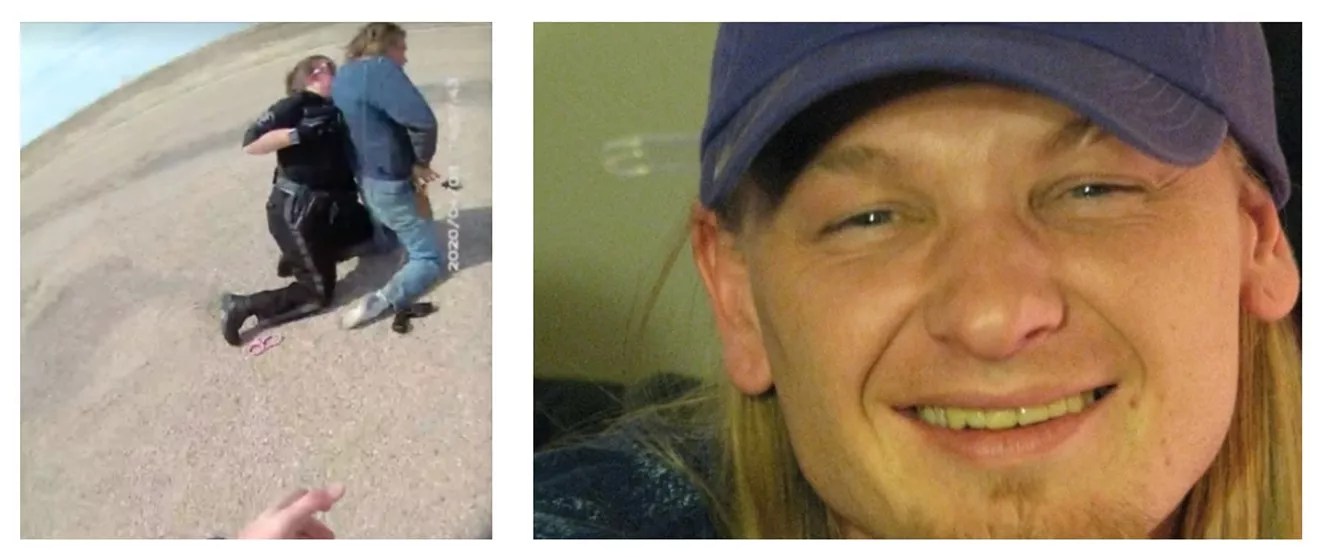
Holland, Holland Edwards & Grossman

Audio By Carbonatix
Last week, 9News reported that a jury in Kiowa County had acquitted former Deputy Quinten Stump of one charge but were deadlocked on two others regarding the killing of Zach Gifford during a controversial law enforcement stop in 2020.
But attorney John Holland of Denver-based Holland, Holland Edwards & Grossman, which represented Gifford’s family in a lawsuit whose April settlement saved the Town of Eads from financial ruin (the $9.5 million settlement was just under the maximum limit covered by insurance), isn’t sure the word “deadlocked” fully conveys the scenario.
“What resonates to me is that ten jurors were adamant for conviction in a law enforcement-oriented community that’s very conservative by nature,” Holland notes. “Ten-to-two isn’t twelve, but it’s not exactly a deadlock. And ‘deadlock’ doesn’t do justice to how close justice came to being achieved in a small, rural, conservative community that wishes law enforcement could be trusted.”
The office of 15th Judicial District DA Josh Vogel has not yet announced whether it will retry Stump for one count apiece of attempted murder and assault; the jury rejected a second attempted-murder beef. If Vogel opts out, however, Holland advocates for the U.S. Department of Justice to take on the matter.
“This was a profound civil rights violation,” he emphasizes. “I have not seen one worse. And I’ve been thinking for some time that it would be important for the federal government to look into the shooting of Zach Gifford.”
The lawsuit’s incident timeline begins on April 9, 2020, when Gifford agreed to help a friend, Bryan Morrell, unload a log splitter off a truck outside Brandon, a place so tiny that it’s referred to locally as a ghost town. Neither knew that Kiowa County Undersheriff Tracy Weisenhorn was nearby, watching a house suspected of drug activity – and Gifford was rumored to have been a drug user. Weisenhorn, who was fired in March 2021 over the Gifford incident but not criminally charged, subsequently initiated a traffic stop of the truck on Main Street, a dirt road just off State Highway 96, on the pretext that Morrell hadn’t properly signaled a turn.
Deputy Sheriff Stump arrived shortly after, even though he was actually under suspension at the time for what the complaint synopsizes as “insubordination”; he also had a history of using force to stop suspects from fleeing. Three examples are shared in the lawsuit, including an episode on Christmas Day 2019, when he opened fire on a stolen truck. Yet Stump remained on the force, in part because “he was well known to be the top earner for the Sheriff’s Office through fines generated from his extensive issuance of traffic tickets, which also provided substantial revenue that the Board of County Commissioners relied on for County expenses,” the suit claims. “Deputy Stump was frequently praised for going ‘above and beyond’ in his ‘dedication to traffic stops.'”

The scene of the shooting.
Holland, Holland Edwards & Grossman
After the truck came to a halt, Gifford and Morrell were patted down for weapons, and nothing suspicious was found; a Leatherman, box cutter and pliers possessed by Gifford were tools of his trade. But Stump continued the search and ultimately found a plastic bag in Gifford’s pocket that he thought might contain drugs. At that point, Gifford began to run, but he didn’t get far; Stump tackled him and Weisenhorn tased him. But after Weisenhorn pressed her gun to his back and threatened to “fucking shoot,” Gifford managed to break free and run into a deserted field. Weisenhorn responded by shooting Gifford in the back, and Stump joined in, hitting him a second time.
Gifford kept going, prompting a third shot that apparently missed. But a fourth shot, fired by Stump eighteen seconds after the previous shot, felled Gifford on the spot.
“They dropped him like a wounded game animal, for doing nothing,” Holland told Westword last year. “And Zach’s suffering wasn’t over, because he didn’t die instantly. Weisenhorn and Stump ran up to him, and while he was bleeding out, they handcuffed him – and he died about two minutes later,” after asking the officers to tell his parents that he loved them.
During this span, according to the lawsuit, Gifford’s life was “dominated with pain and suffering including his consciousness of impending death…. One bullet went through his right thoracic back, perforating the skin, subcutaneous tissues, musculature, posterolateral right rib, right lung, and the anterior right third intercostal musculature before exiting. Another bullet perforated the skin, subcutaneous tissues, and embedded in the muscle of his right lower back. Another bullet entered his left lower back and perforated the skin, subcutaneous tissues, left psoas muscle, mesentery, and the stomach before exiting.”
The larger part of a year passed before Stump was indicted. But Holland praises Vogel and his staff effusively for their willingness to move forward with the case.
“It was courageous that they prosecuted,” he maintains, “and it’s remarkable to me that ten people felt so strongly about it.”
Still, Holland stresses, “Justice has not been fully served for Zach, and as painful as it is for the family to have to endure seeing pictures and visuals of their son after this unconstitutional shooting, I’m hopeful that the DA and the federal United States attorneys will take a very hard look at what happened here.”
The Justice Department is best known for taking on what would otherwise be local prosecutions when issues of race are at the forefront. But the agency has the power to tackle matters involving other constitutional elements, too, and Holland has no doubt that what happened to Gifford qualifies. In his words, “What happened in Brandon should concern all of us, including the United States government.”
In the meantime, the Kiowa County Commissioners are considering a proposal to rename a portion of Highway 96 after Zach Gifford, whose loss continues to haunt the community. Click to read Estate of Zachary Gifford v. Tracy Weisenhorn, et al.